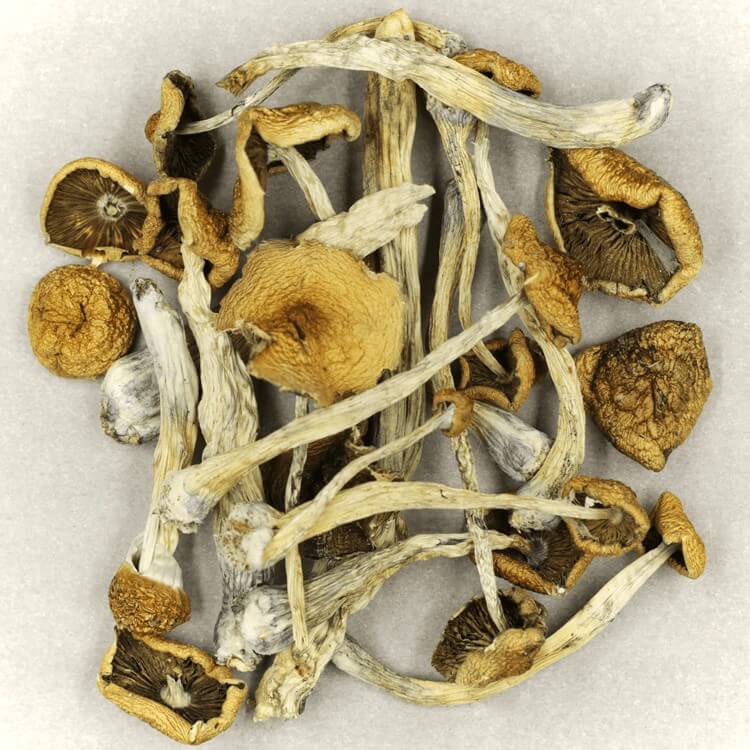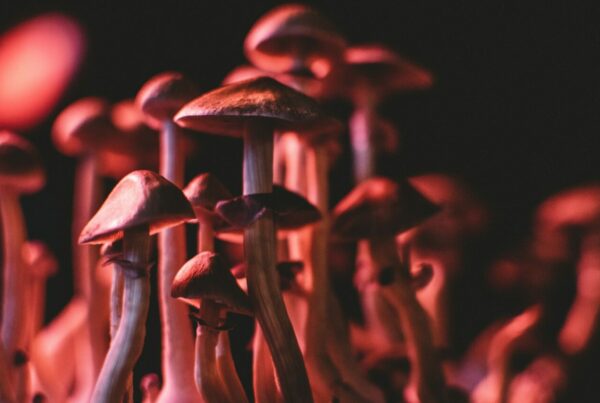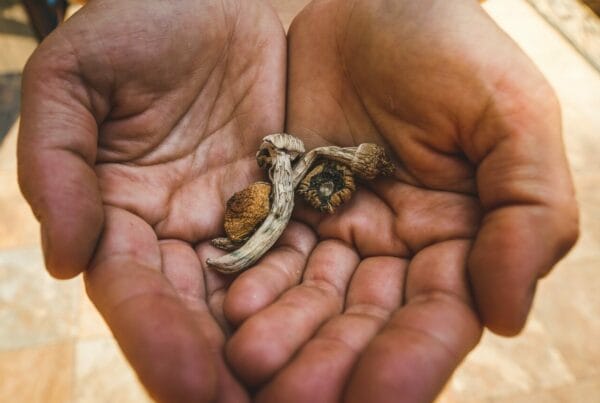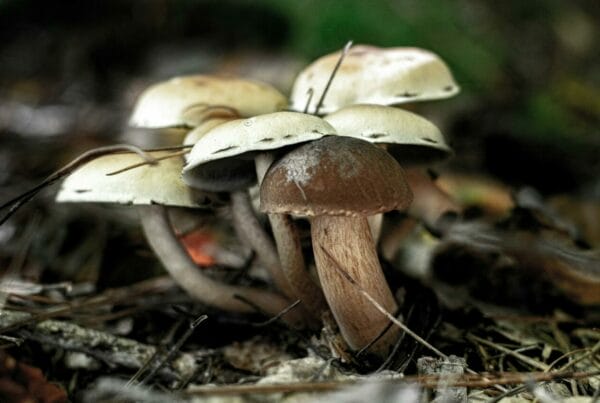Once thought to be nothing more than a myth, the potency of Psilocybe mexicana is now recognized due to advancements in psilocybin research. The psychedelic research community is consistently unearthing its therapeutic benefits, gradually gaining acceptance within the realm of medicine. This burgeoning field is viewed as promising by experts who are committed to establishing safe dosage levels for its medicinal use.
Key Takeaways
- Researchers are leveraging advanced techniques such as liquid chromatography in conjunction with tandem mass spectrometry to ascertain the potency of mushrooms.
- Psilocybe Mexicana, along with other mushroom varieties, is being examined in clinical trials to evaluate its potential therapeutic applications.
- The genetic diversity in magic mushrooms plays a critical role in formulating an accurate dosage chart.
Psychedelic Mushrooms: From Relative Unknown to Research Milestones
In the past, only a limited number of conditions were known to benefit from Psilocybe Cubensis. However, recent breakthroughs in psilocybin research are revealing a wealth of medicinal properties.
Researchers are exploring the potential of Psilocybe Mexicana and other potent strains through extensive clinical trials and research. Regardless of whether the subjects are in vivo or in vitro, this strain has proven effective in showcasing the true effects and benefits of the fungal species.
Psychedelics Making Their Way into the Market
What was once concealed is now being unveiled—ongoing advancements and discoveries are piquing the public’s interest, especially among those seeking therapeutic solutions. Traditional treatments for mental health conditions often prove inadequate, leading individuals to pursue more dependable alternatives.
Welcome, magic mushrooms.
Individuals struggling with mental health conditions are turning to psilocybin, with research suggesting its efficacy in addressing depression, alcohol dependency, anxiety, compulsions, tics, chronic pain, and more.
Currently, medical practitioners are exploring innovative techniques to determine the ideal dosage for safe patient administration. A research team from the University of Texas, for instance, has developed a model to extract psilocybin and psilocin concentrations.
A clear understanding of the potency of magic mushrooms in a clinical setting can indeed be achieved.
The Distinctive Traits of Mexicana
Golden Teachers, Blue Meanies, and B-Plus are among the magic mushrooms that have been extensively researched. However, for a comprehensive understanding of safe magic mushroom usage, it’s imperative to study a wider range of species.
The Mexicana species has gained significant attention in research due to its age-old existence and lower potency, which aligns well with medicinal drug standards, making it a favored choice for many.
Despite its less potent nature compared to other species, the Mexicana strain can still deliver effects similar to more mainstream strains. This makes it an ideal choice for microdosing, a practice gaining popularity among patients.
It has comparable levels of psilocybin and psilocin to other strains, so what makes it stand out? Its historical and anthropological significance offers an intriguing answer.
Delving into the Rich History of the “Mexican” Mushroom
In ancient times, psilocybe mexicana grew naturally within moss. Indigenous societies held these psilocybin mushrooms in high regard due to their versatile applications, often linked to mystical or supernatural phenomena.
Let’s focus on these Mexican mushrooms. Their usage dates back over 2000 years, as recorded by the natives of North and Central America. The Aztecs, a primitive ethnic group, labeled these mushrooms as “food of the Gods,” or “teonanácatl” in their native dialect.
If the Aztecs were still around, they would endorse the transformative, emotionally potent, and psychologically stabilizing effects of the Mexicana mushroom, even without comprehending these modern terminologies.
Despite diverse cultivation methods, this mushroom has succeeded in preserving its natural psilocybin concentrations, reinforcing its authenticity. This genuineness is a standard that is greatly valued by researchers and psychedelic research institutions.
Innovative Methods for Assessing Psilocybin Content and Potency
A team of ten researchers from the University of Texas at Arlington and other research institutions have devised a novel method for assessing the potency of psychoactive compounds in mushrooms. This groundbreaking technique combines liquid chromatography and tandem mass spectrometry.
Here are two progressive approaches:
- Liquid chromatography is a technique used to separate and analyze chemical compounds in a mixture. Here, it’s applied to identify active chemicals in mushrooms. The method includes passing a liquid sample through a solid material-filled column, known as the stationary phase. The interaction between various chemicals in the sample and the stationary and mobile phases causes them to separate at different rates while moving through the column.
- Spectrometry primarily investigates the interaction of matter with electromagnetic radiation over a range of wavelengths. It identifies and quantifies substances based on the specific wavelengths of light absorbed and scattered by molecules. This process enables the assessment of the electronic, vibrational, and rotational states of a chemical.
Researchers implemented this technique on five strains of magic mushrooms. They found that the average total concentrations of psilocybin and psilocin across these strains ranged from 0.879 to 1.36. These concentrations exceeded those of many other strains, including Bull Run and Cambodian. The researchers verified the accuracy of their study by comparing their findings with data from other independent laboratories.
The congruence of the results between the two labs adds further credence to the validity of their testing sequence in accurately assessing the potency of the mushrooms.
If this methodology gains validation from experts, it may add a new suite of techniques to the existing psychedelic potency testing methods, thereby offering an extra layer of safety against hazardous dosage determinations.
Expanding Research to Other Mushroom Species
The expansion of research to include other mushroom species is advantageous. It could deepen our knowledge of the health benefits linked to different strains and provide baseline data on the effects of less potent mushrooms.
In addition to this, it could help in educating individuals about the influences of differing dosages on the psychedelic experience. By contrasting Mexicans with stronger strains like Psilocybe Cubensis, researchers can evaluate how variations in active compound concentrations affect therapeutic outcomes.
For example, the Blue Meanies strain induces more potent hallucinogenic effects, which could potentially be effective in managing conditions like depression. Alternatively, less potent strains are more suitable for microdosing or subtler uses such as mood enhancement or focus improvement.
The Role of Genetic Diversity in Safer Treatments
It’s not widely recognized that unique genetic profiles and differ in potency, chemical composition, and effects. Acknowledging this diversity allows healthcare experts to select the most suitable variety for specific medical purposes and adjust doses to meet individual requirements, thereby reducing risks and maximizing benefits.
Take, for instance, Psilocybe Semilanceata (Liberty Caps), or Psilocybe cyanescens. These possess unique alkaloid compositions that may prove effective in alleviating anxiety. In contrast, other synthetically grown mushrooms might be better suited for addressing substance abuse or compulsive behaviors. This diversity aids in designing tailored treatments that are safer and more effective.
It can be inferred that the genetic diversity in psychedelic mushrooms, coupled with new methods of potency assessment and identification, is essential for devising safer medical treatments.
Enhanced Safety in Medical Use
Let’s take a moment to contemplate the potential benefits of safer dosing.
- Decreased risk of overdosing: With accurate dosing, users can eliminate concerns about overdosing. This also suggests the necessity for clearer product labeling to avoid consumer misunderstanding.
- Increased predictability: Users can expect the effects or experiences they might encounter during their trips with more precise dosing. This can mitigate overwhelming sensations and anxiety, thus enhancing patient satisfaction.
- Standardized measurement: In some way, accurate dosing can foster a standardized metric, enabling individuals to conveniently refer to charts for potential effects.
Experience the Advantages of Precisely-dosed Shrooms with Advanced Potency Tests | Buy Magic Mushrooms Online at Shrooms Near Me Canada
If these two groundbreaking techniques continue, you won’t have to deal with unpredictable effects. Combine this with smart online shopping at Shrooms Near Me Canada. We offer dried mushrooms that provide a tranquil, soothing psychedelic journey without excessive psychoactivity. Buy psychedelics online in Canada via Shrooms Near Me Canada.
Frequently Asked Questions
Do Psilocybe Mexicana and Big Mexicans resemble each other?
Are Big Mexicans and Psilocybe Cubensis identical?
No, Big Mexicans and Psilocybe Cubensis are distinct strains of mushrooms, so it’s crucial not to confuse them. Big Mexicans exhibit a higher compound isolation, ranging from 0.5% to 1%, which makes them considerably more potent.
Take note of the Psilocybe Mexicana mushrooms’ distinct appearance from that of the Psilocybe Cubensis. The former frequently sports a bell-shaped cap, in contrast to the latter’s typical conical shape.
What is the highest concentration found in Mexican mushrooms?
The concentrations of psilocybin and psilocin in Mexican mushrooms can max out at 0.25%. While these levels are relatively low, similar to that of the Golden Teacher strain, they can still bring about potent psychedelic experiences, which may have potential health benefits.
What is a medically safe dosage?
Generally, a dosage ranging from 1 to 2 grams is recommended. However, this can fluctuate depending on factors like consumption methods, individual metabolic rates, and the specific strain’s potency. For those who wish to mitigate the hallucinogenic effects, dosages as low as 0.05 (50mg) to 0.025 grams (250mg) are opted for.





